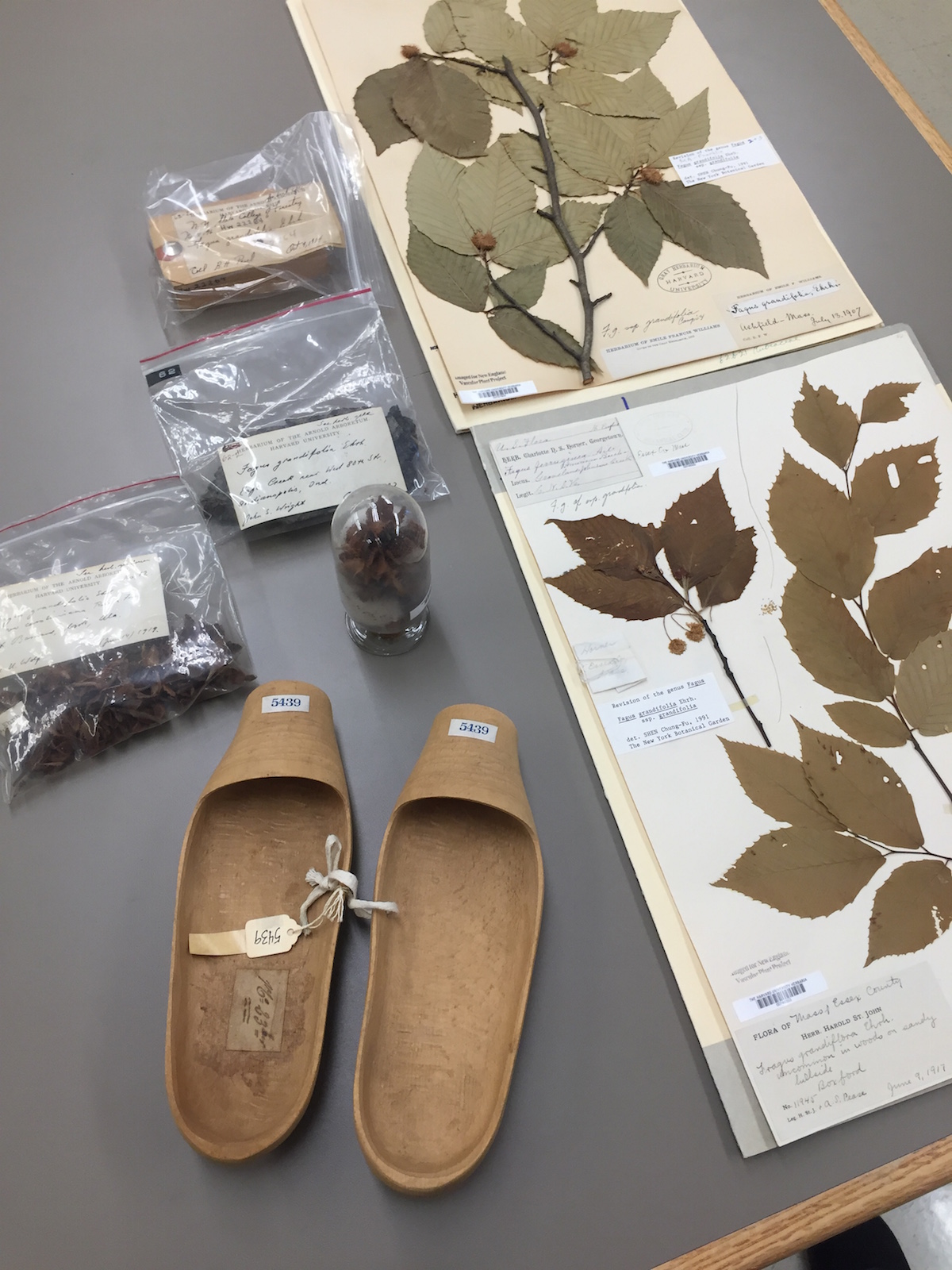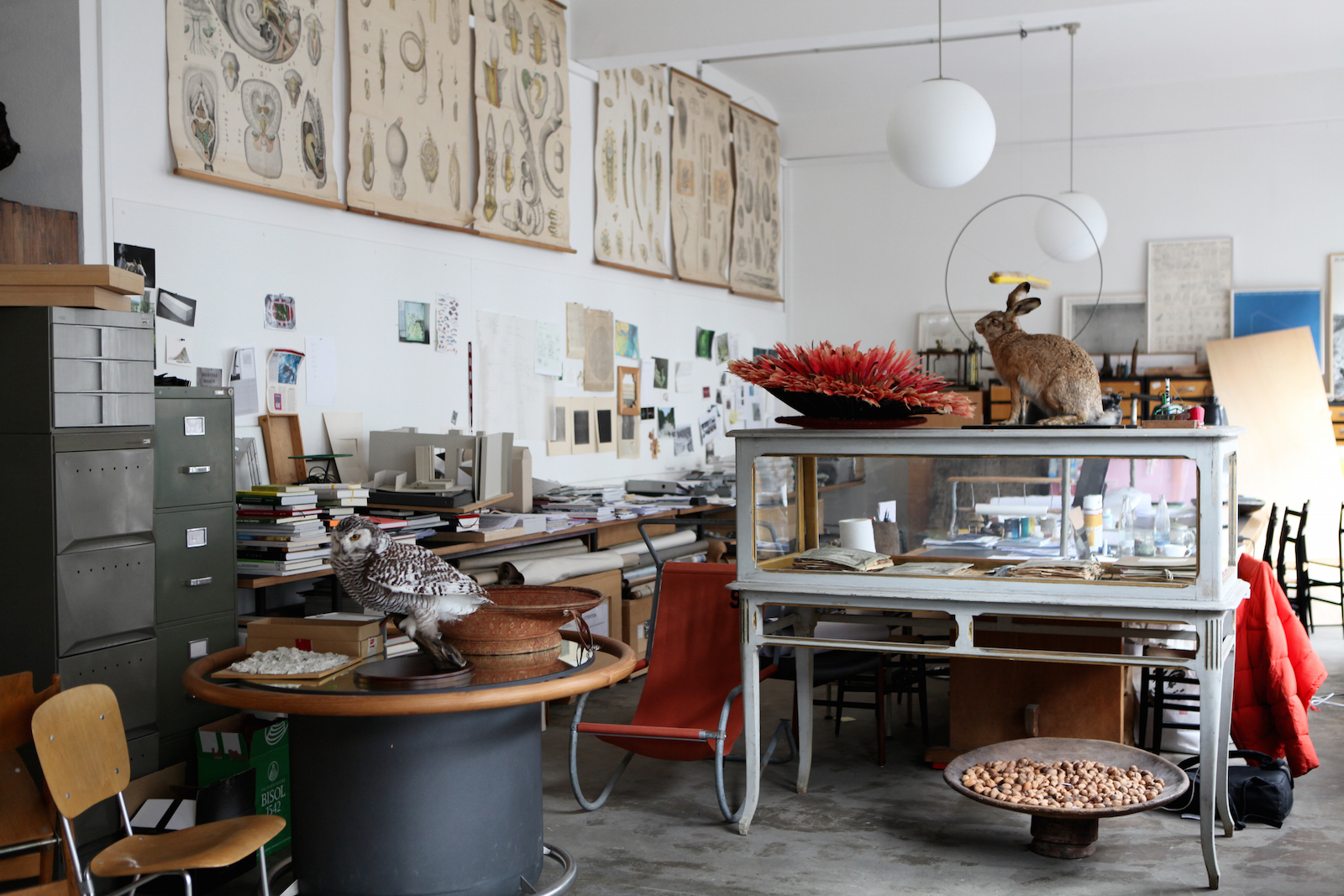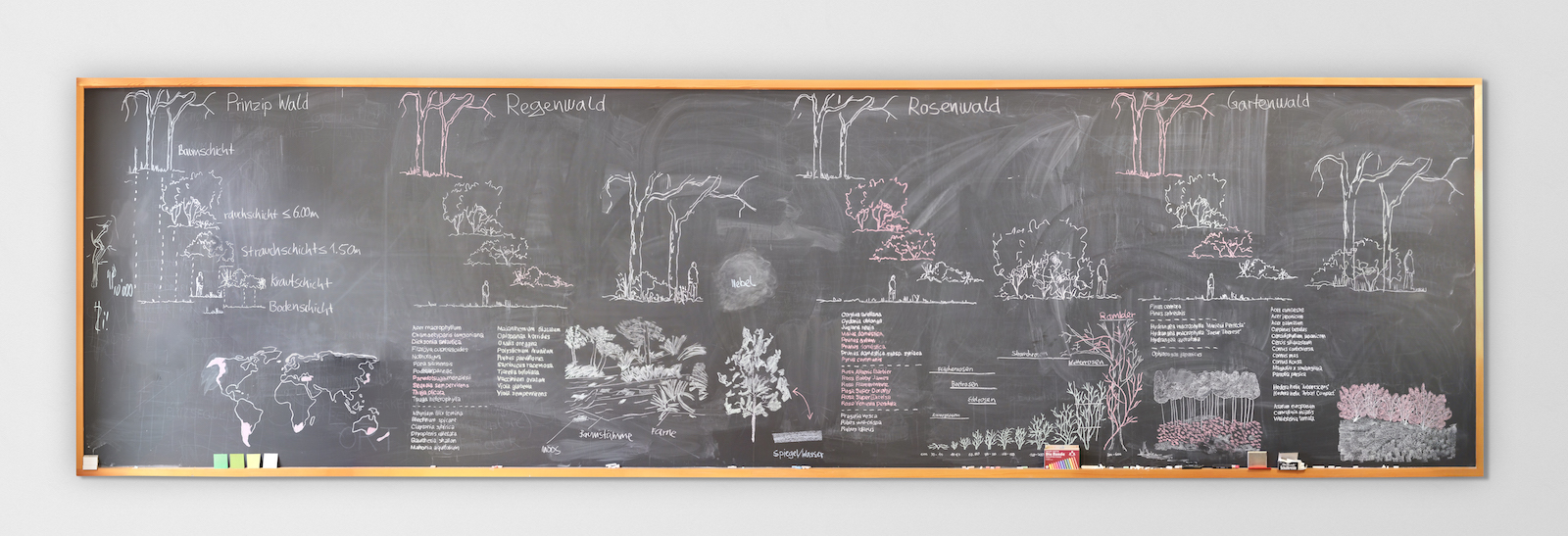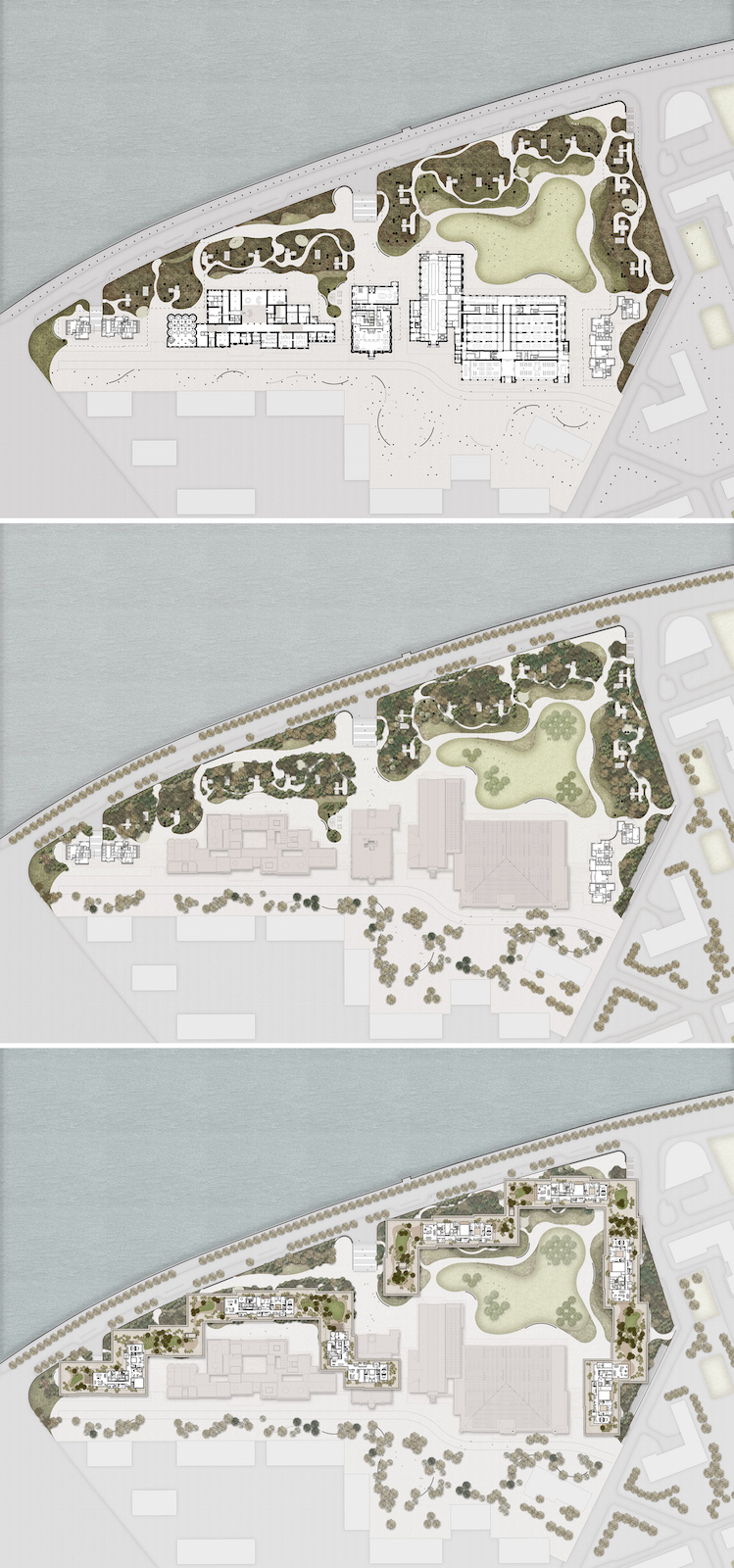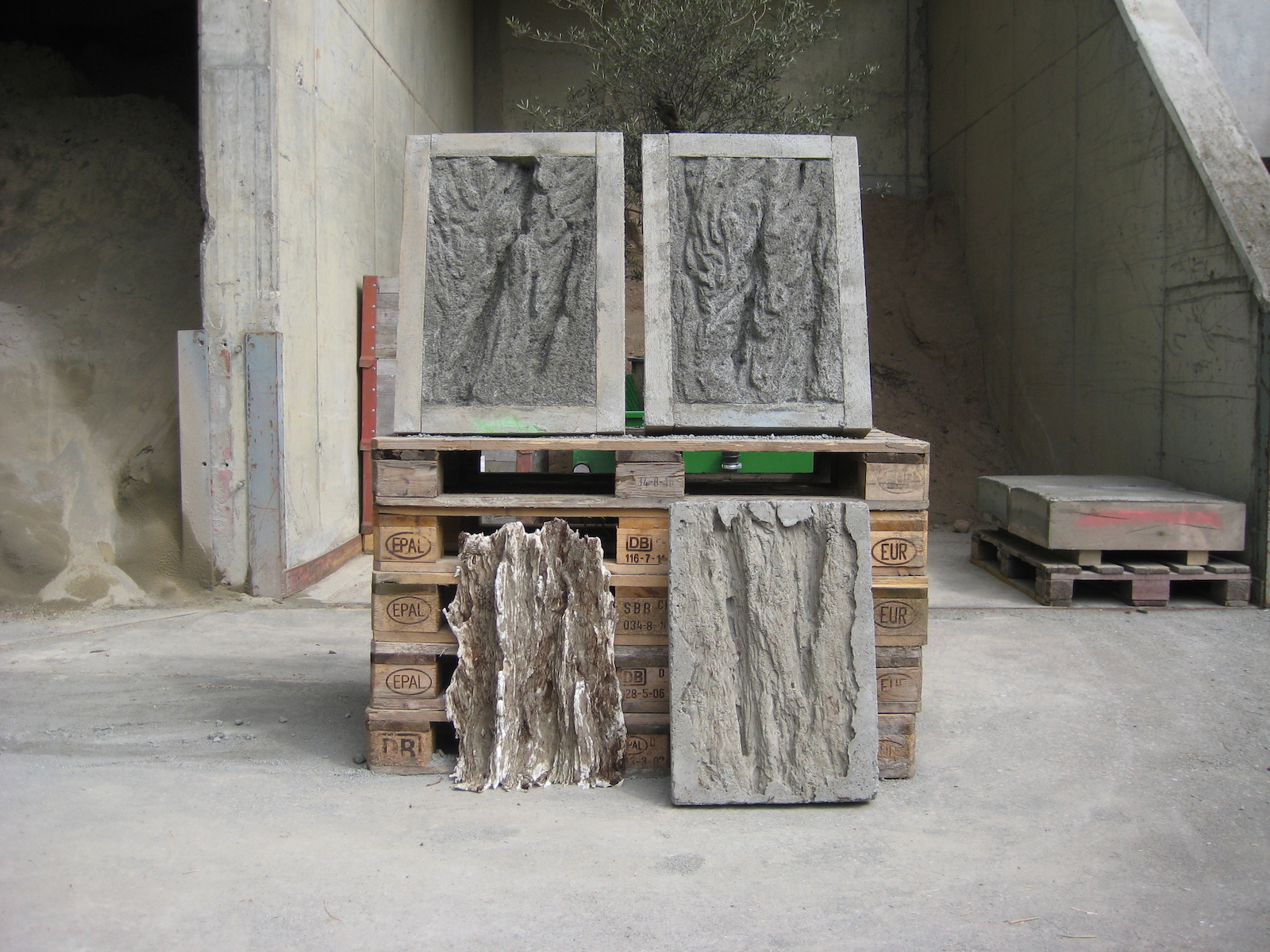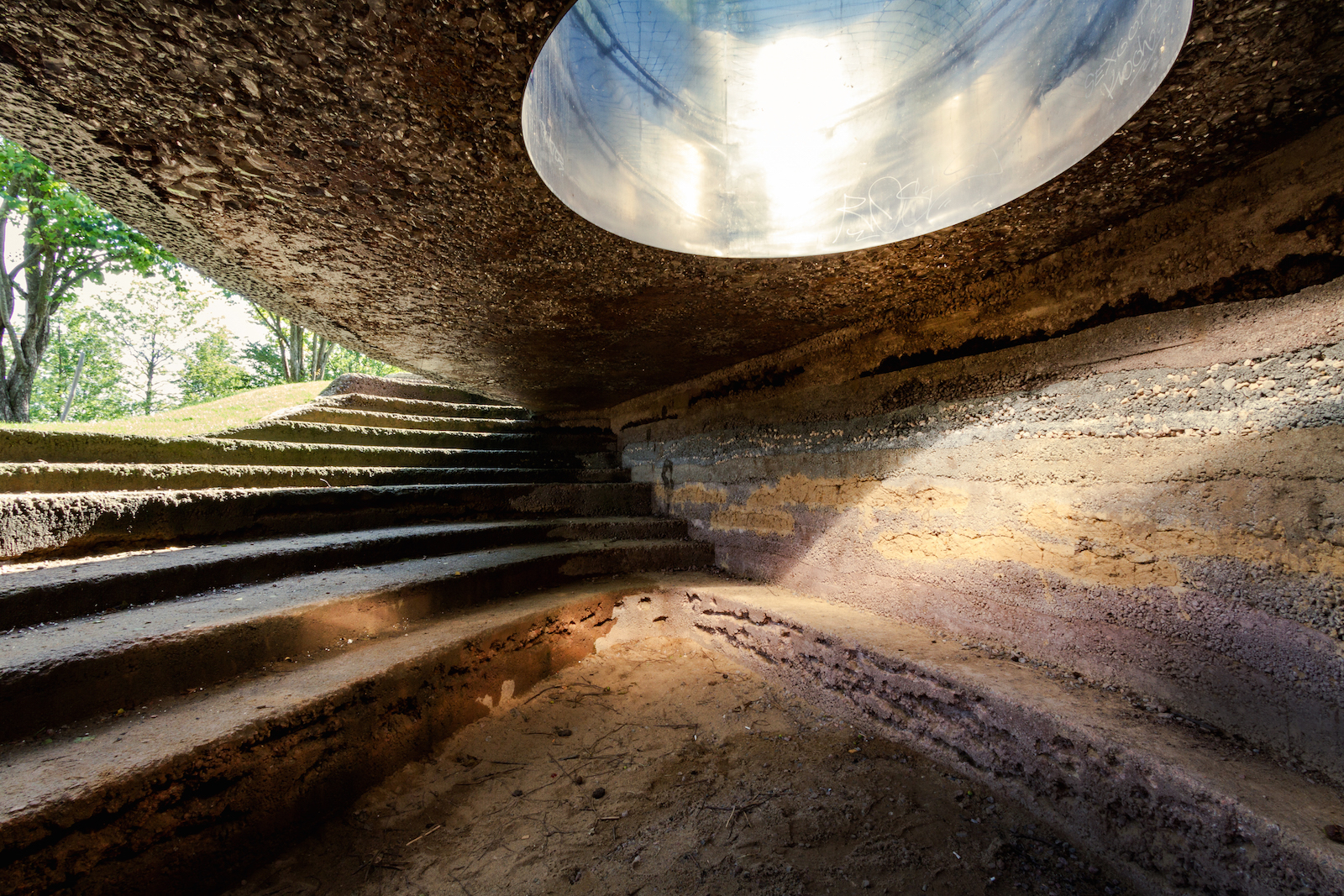First the Forests
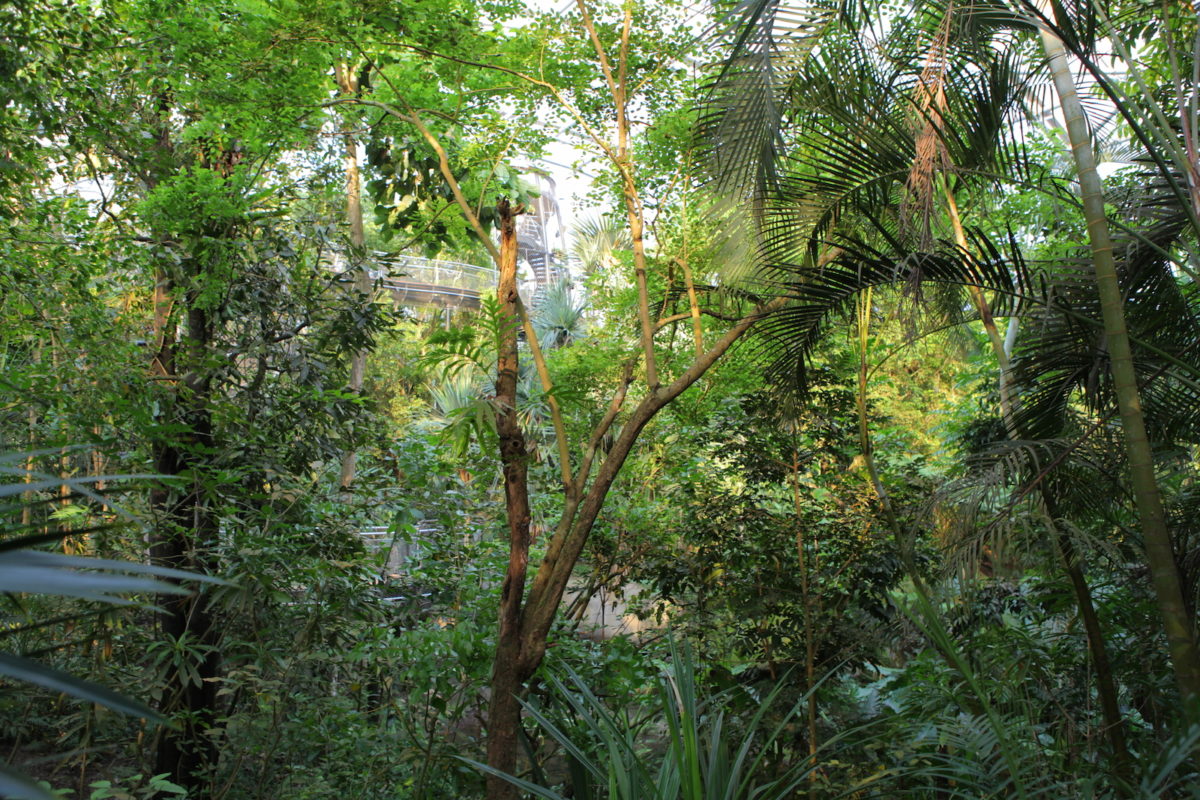
This exhibition explores the complex and intertwined layers of knowledge—sciences, history, aesthetics, and material culture—that are embedded in the seemingly simple undertaking of planting, whether a large forest, an urban park, or a garden. It does so through documenting the creative process of the work of Günther Vogt Landscape Architects, for whom plants have been a central subject and loci of experimentation.
In the manner of a Wunderkammer, the exhibition documents six projects by bringing together a collection of artifacts of varied origins, materiality, function, and geographical provenance. In Vogt’s practice, the Wunderkammer is part record and part design method, as the artifacts are utilized at the beginning of each project to instigate broad discussion and form the intellectual direction of the work ahead. Located in the premises of the office and Case Studio, it contains an encyclopedic collection of objects from around the world, not counting his extensive library.
The artifacts in this exhibition are displayed in four classes of frames: shallow boxes contain drawings, photographs, and reference images of each project; deep boxes display a selection of objects from Vogt’s collection, including plaster casts, surveying instruments, seeds, study models, wood samples, plant specimens, geological core samples, books, drawings, and models; free-standing magical machines are dioramas for the simulation and testing of wind, fire, water, and earth in the design process; and a mirrored hut, in the shape and size of Thoreau’s cabin, references the indivisibility between direct observation of the natural world, introspective reflection, and the imagination in the mediation of nature. Together, they showcase the methodologies, exercises, and precedents through which the firm explores and analyzes plants as a central protagonist of the practice.
Plant specimens for this exhibit are located downstairs in the reading room of the Frances Loeb Library.
